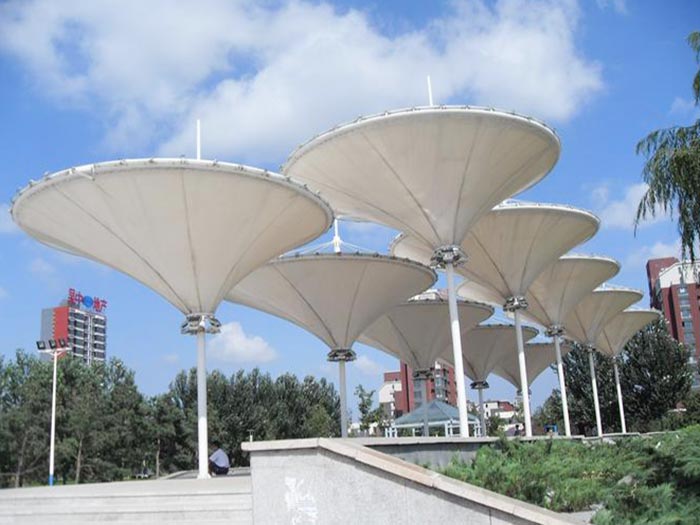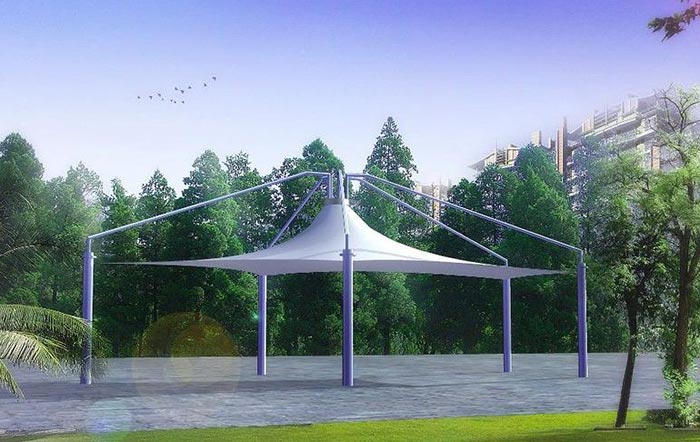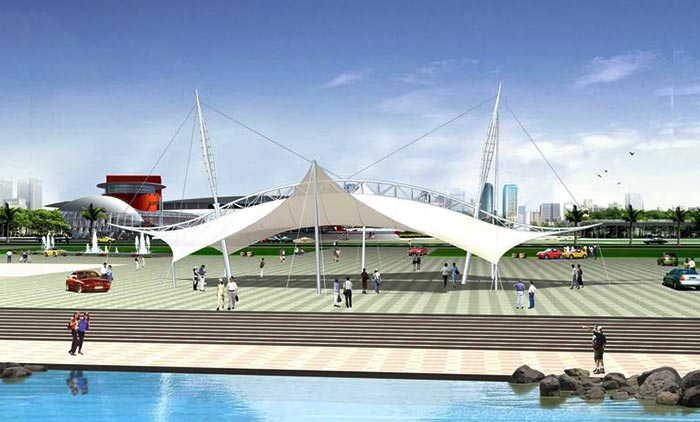Innovative application of tensile structure in landscape design
In the field of landscape design, tensile structure is gradually emerging, adding a different charm to the landscape with its unique form and excellent performance. Tensile structure is a system that uses tension to maintain structural stability through materials such as cables and membranes. It breaks the constraints of traditional building structures and provides landscape designers with a broad creative space.

Tensile structure has distinct characteristics, which give it unique advantages in landscape design. First of all, its light form, the membrane material is light in texture, and various smooth and flexible curve shapes can be formed through the tension of the cable, as if it is a flowing element in nature, harmoniously blending with the surrounding landscape environment, bringing a dynamic beauty to the landscape. For example, at the entrance of some parks, the tensile structure designed as a flying bird spreading its wings not only attracts the attention of tourists, but also conveys a free and flexible atmosphere.
Secondly, the tensile structure has good light transmittance. The membrane material allows light to pass through softly, creating a unique light and shadow effect. During the day, sunlight shines through the membrane, forming mottled light and shadow, providing a poetic space for people to rest; at night, the internal lights are on, and the tensile structure becomes a unique “lamp”, illuminating the surrounding environment, and also becomes a visual focus in the landscape.

In terms of function, the tensile structure also has an outstanding performance. It can provide shade and shelter for outdoor spaces. Tensile structures are built in squares, rest areas and other places, and people can enjoy outdoor activities under them, free from direct sunlight and rain. Moreover, its installation and disassembly are relatively simple. For some temporary landscape projects or activity venues, it can be quickly built and dismantled, greatly improving the flexibility of space utilization.
From the perspective of innovative application, tensile structures continue to open up new areas in landscape design. In the design of urban squares, it can serve as a unique landmark building, giving the square a unique personality. For example, in the central square of a certain city, the huge tensile structure is like a blooming flower, covering a large area of space, becoming a popular place for citizens to gather and relax, and also a new business card for the city.
In the waterfront landscape, the tension structure is combined with the waterscape to create a unique landscape experience. The bridge or viewing platform constructed with cables and membrane materials not only guarantees the passage needs of pedestrians, but also adds a sense of modernity and technology to the waterfront landscape. Visitors walking on the bridge can not only enjoy the beautiful waterscape, but also feel the unique spatial experience brought by the tension structure.

In ecological landscape design, the tension structure also plays an important role. It can be combined with green plants to create an ecological and environmentally friendly landscape space. For example, using tensile structures to build vertical green walls can add green vitality to the city, and can also purify the air and regulate the microclimate.
The innovative application of tension structures in landscape design not only brings unique visual effects and practical functions to the landscape, but also injects new vitality and concepts into landscape design. With the continuous development of material science and design technology, it is believed that tensile structure will have more extensive and wonderful applications in future landscape design, creating more beautiful outdoor spaces for people.